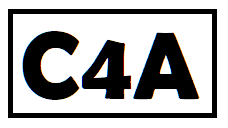Body Surface Area (BSA) Calculator
Understanding Body Surface Area (BSA)
The Body Surface Area (BSA) is a measurement that estimates the total surface area of a human body. It is crucial in medical calculations, particularly for determining drug dosages, fluid administration, and other clinical parameters.
Why Calculate BSA?
Accurate BSA calculations ensure that medications and treatments are administered appropriately based on the patient’s size. This is particularly important for drugs that distribute or metabolize differently across body surfaces.
Common BSA Calculation Formulas
Several formulas are used to estimate BSA. Each has its own advantages and applications. Below are some of the most commonly used methods:
Du Bois Formula
The Du Bois formula is one of the earliest and most widely used methods:
\[ \text{BSA} = 0.007184 \times H^{0.725} \times W^{0.425} \]Where \( W \) is weight in kilograms and \( H \) is height in centimeters.
Mosteller Formula
The Mosteller formula is similar to the Du Bois formula:
\[ \text{BSA} = \sqrt{\frac{W \times H}{3600}} \]This formula is often used in pediatric and adult populations.
Haycock Formula
The Haycock formula is more accurate for taller individuals:
\[ \text{BSA} = 0.024265 \times H^{0.3964} \times W^{0.5378} \]Where \( H \) is height in centimeters and \( W \) is weight in kilograms.
Gehan & George Formula
The Gehan & George formula accounts for gender differences:
\[ \text{BSA}_{\text{male}} = 0.0235 \times H^{0.42246} \times W^{0.51456} \] \[ \text{BSA}_{\text{female}} = 0.022 \times H^{0.42246} \times W^{0.51456} \]Where \( H \) is height in centimeters and \( W \) is weight in kilograms.
Boyd Formula
The Boyd formula provides a simple and accurate estimation:
\[ \text{BSA} = 0.03330 \times W^{(0.6157 – 0.0188 \times \log_{10}(W))} \times H^{0.3} \]Where \( H \) is height in centimeters and \( W \) is weight in kilograms.
Fujimoto Formula
The Fujimoto formula is another method that considers height and weight:
\[ \text{BSA} = 0.008883 \times W^{0.444} \times H^{0.663} \]Where \( H \) is height in meters and \( W \) is weight in kilograms.
Takahira Formula
The Takahira formula is designed for Asian populations:
\[ \text{BSA} = 0.007241 \times H^{0.725} \times W^{0.425} \]Where \( H \) is height in centimeters and \( W \) is weight in kilograms.
Schlich Formula
The Schlich formula is a simple estimation method:
\[ \text{BSA}_{\text{male}} = 0.000579479 \times H^{1.24} \times W^{0.38} \] \[ \text{BSA}_{\text{female}} = 0.000975482 \times H^{1.08} \times W^{0.46} \]Where \( H \) is height in centimeters and \( W \) is weight in kilograms.
Using the BSA Calculator
To use the BSA calculator, simply input your height and weight, select the appropriate units, and click “Calculate BSA”. The calculator will provide your BSA in square meters (m²), square feet (ft²), and square inches (in²) using multiple methods.
Conclusion
Accurate BSA calculations are essential in medical practice. By using this BSA calculator, you can easily estimate your body surface area using various formulas, ensuring precise medical dosing and treatment planning.
References
- Du Bois D, Du Bois EF (Jun 1916). “A formula to estimate the approximate surface area if height and weight be known”. Archives of Internal Medicine 17 (6): 863-71. PMID 2520314. Retrieved 2012-09-09.
- Mosteller RD. “Simplified calculation of body-surface area”. N Engl J Med 1987; 317:1098. PMID 3657876.
- Haycock GB, Schwartz GJ, Wisotsky DH “Geometric method for measuring body surface area: A height-weight formula validated in infants, children and adults” J Pediatr 1978, 93:62-66.
- Gehan EA, George SL, Cancer Chemother Rep 1970, 54:225-235.
- Boyd, Edith (1935). The Growth of the Surface Area of the Human Body. University of Minnesota. The Institute of Child Welfare, Monograph Series, No. x. London: Oxford University Press.
- Fujimoto S, Watanabe T, Sakamoto A, Yukawa K, Morimoto K. Studies on the physical surface area of Japanese. 18. Calculation formulae in three stages over all ages. Nippon Eiseigaku Zasshi 1968;5:443-50.
- Schlich E, Schumm M, Schlich M: “3-D-Body-Scan als anthropometrisches Verfahren zur Bestimmung der spezifischen Korperoberflache”. Ernahrungs Umschau 2010;57:178-183.
